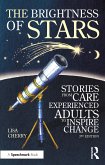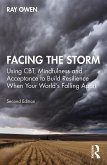Judith Belle Brown, Tanya Thornton, Moira Stewart
Challenges and Solutions
Narratives of Patient-Centered Care
Judith Belle Brown, Tanya Thornton, Moira Stewart
Challenges and Solutions
Narratives of Patient-Centered Care
- Broschiertes Buch
- Merkliste
- Auf die Merkliste
- Bewerten Bewerten
- Teilen
- Produkt teilen
- Produkterinnerung
- Produkterinnerung
The foundation of patient-centered care is the patient-professional relationship
Andere Kunden interessierten sich auch für
![The Moral Distress Syndrome Affecting Physicians The Moral Distress Syndrome Affecting Physicians]() Frezza, MD, MBA, FACS, EldoThe Moral Distress Syndrome Affecting Physicians37,99 €
Frezza, MD, MBA, FACS, EldoThe Moral Distress Syndrome Affecting Physicians37,99 €![The Brightness of Stars The Brightness of Stars]() Lisa CherryThe Brightness of Stars205,99 €
Lisa CherryThe Brightness of Stars205,99 €![The Handbook of LGBTQIA-Inclusive Hospice and Palliative Care The Handbook of LGBTQIA-Inclusive Hospice and Palliative Care]() Kimberly D. AcquavivaThe Handbook of LGBTQIA-Inclusive Hospice and Palliative Care34,99 €
Kimberly D. AcquavivaThe Handbook of LGBTQIA-Inclusive Hospice and Palliative Care34,99 €![The Brightness of Stars The Brightness of Stars]() Lisa CherryThe Brightness of Stars19,99 €
Lisa CherryThe Brightness of Stars19,99 €![Facing the Storm Facing the Storm]() Ray OwenFacing the Storm22,99 €
Ray OwenFacing the Storm22,99 €![Hunger and Famine in the Long Nineteenth Century Hunger and Famine in the Long Nineteenth Century]() Hunger and Famine in the Long Nineteenth Century137,99 €
Hunger and Famine in the Long Nineteenth Century137,99 €![The Elephant in the Staffroom The Elephant in the Staffroom]() Chris EyreThe Elephant in the Staffroom25,99 €
Chris EyreThe Elephant in the Staffroom25,99 €-
-
-
The foundation of patient-centered care is the patient-professional relationship
Hinweis: Dieser Artikel kann nur an eine deutsche Lieferadresse ausgeliefert werden.
Hinweis: Dieser Artikel kann nur an eine deutsche Lieferadresse ausgeliefert werden.
Produktdetails
- Produktdetails
- Verlag: Taylor & Francis Ltd
- Seitenzahl: 230
- Erscheinungstermin: 14. November 2011
- Englisch
- Abmessung: 244mm x 170mm x 13mm
- Gewicht: 528g
- ISBN-13: 9781846194962
- ISBN-10: 1846194962
- Artikelnr.: 42697604
- Herstellerkennzeichnung
- Libri GmbH
- Europaallee 1
- 36244 Bad Hersfeld
- gpsr@libri.de
- Verlag: Taylor & Francis Ltd
- Seitenzahl: 230
- Erscheinungstermin: 14. November 2011
- Englisch
- Abmessung: 244mm x 170mm x 13mm
- Gewicht: 528g
- ISBN-13: 9781846194962
- ISBN-10: 1846194962
- Artikelnr.: 42697604
- Herstellerkennzeichnung
- Libri GmbH
- Europaallee 1
- 36244 Bad Hersfeld
- gpsr@libri.de
Judith Belle Brown, Tanya Thornton, Moira Stewart
Series editors' introduction. About the editors. List of contributors.
Acknowledgments. Introduction. Component I: exploring health, disease and
illness experience. Narratives illustrating component I: exploring health,
disease and illness experience. Loss of voice - loss of self. The lonely
journey with lupus. Frozen. A falling star. Living with a chronic illness.
The bear that saved her life. Conquering pain and fear. Facing an incurable
condition. Clearing the path. A ray of hope. Component II: understanding
the whole person. Narratives illustrating component II: understanding the
whole. Losses and gains. I am just an addict - can I trust you - can you
trust me? The issue at hand. I want to die at home. A young boy's journey.
Victor brings victory. New beginnings. The onlookers. The criminal.
Understanding the whole person without knowing the whole person. Component
III: finding common ground. Narratives illustrating component III: finding
common ground. Let it be. The alliance. Infusing humanity into the
resuscitative context. A tale of spunk and smoke. Indelible ink - part 1.
Indelible ink - part 2. Growing into a mom. You're not listening to me! A
sad refrain. Unexplored territory 1. Component IV: enhancing the
patient-doctor relationship. Narratives illustrating component IV:
enhancing the patient-doctor relationship. Unexplored territory 2. A
healing presence. A familiar kiss good-bye. A gift offered - a gift
received. A misalignment offers understanding. Part 1: the depth of shame.
Part 2: the depth of shame. An urgent request - a delayed response. The
patient-physician relationship over time. Restoring the healer. The four
interactive components of the patient-centered clinical method. Narratives
illustrating the four interactive components of the patient-centered
clinical method. Looking for hope - finding compassion: part 1. Looking for
hope - finding compassion: part 2. Itching to be treated. Part 1 - not a
typical teenager 1. Part 2 - not a typical teenager 2. More than just a
tummy ache. Continuity equals care. The heartsink patient. A case in
complexity - part 1. A case in complexity - part 2. References. Index.
Acknowledgments. Introduction. Component I: exploring health, disease and
illness experience. Narratives illustrating component I: exploring health,
disease and illness experience. Loss of voice - loss of self. The lonely
journey with lupus. Frozen. A falling star. Living with a chronic illness.
The bear that saved her life. Conquering pain and fear. Facing an incurable
condition. Clearing the path. A ray of hope. Component II: understanding
the whole person. Narratives illustrating component II: understanding the
whole. Losses and gains. I am just an addict - can I trust you - can you
trust me? The issue at hand. I want to die at home. A young boy's journey.
Victor brings victory. New beginnings. The onlookers. The criminal.
Understanding the whole person without knowing the whole person. Component
III: finding common ground. Narratives illustrating component III: finding
common ground. Let it be. The alliance. Infusing humanity into the
resuscitative context. A tale of spunk and smoke. Indelible ink - part 1.
Indelible ink - part 2. Growing into a mom. You're not listening to me! A
sad refrain. Unexplored territory 1. Component IV: enhancing the
patient-doctor relationship. Narratives illustrating component IV:
enhancing the patient-doctor relationship. Unexplored territory 2. A
healing presence. A familiar kiss good-bye. A gift offered - a gift
received. A misalignment offers understanding. Part 1: the depth of shame.
Part 2: the depth of shame. An urgent request - a delayed response. The
patient-physician relationship over time. Restoring the healer. The four
interactive components of the patient-centered clinical method. Narratives
illustrating the four interactive components of the patient-centered
clinical method. Looking for hope - finding compassion: part 1. Looking for
hope - finding compassion: part 2. Itching to be treated. Part 1 - not a
typical teenager 1. Part 2 - not a typical teenager 2. More than just a
tummy ache. Continuity equals care. The heartsink patient. A case in
complexity - part 1. A case in complexity - part 2. References. Index.
Series editors' introduction. About the editors. List of contributors.
Acknowledgments. Introduction. Component I: exploring health, disease and
illness experience. Narratives illustrating component I: exploring health,
disease and illness experience. Loss of voice - loss of self. The lonely
journey with lupus. Frozen. A falling star. Living with a chronic illness.
The bear that saved her life. Conquering pain and fear. Facing an incurable
condition. Clearing the path. A ray of hope. Component II: understanding
the whole person. Narratives illustrating component II: understanding the
whole. Losses and gains. I am just an addict - can I trust you - can you
trust me? The issue at hand. I want to die at home. A young boy's journey.
Victor brings victory. New beginnings. The onlookers. The criminal.
Understanding the whole person without knowing the whole person. Component
III: finding common ground. Narratives illustrating component III: finding
common ground. Let it be. The alliance. Infusing humanity into the
resuscitative context. A tale of spunk and smoke. Indelible ink - part 1.
Indelible ink - part 2. Growing into a mom. You're not listening to me! A
sad refrain. Unexplored territory 1. Component IV: enhancing the
patient-doctor relationship. Narratives illustrating component IV:
enhancing the patient-doctor relationship. Unexplored territory 2. A
healing presence. A familiar kiss good-bye. A gift offered - a gift
received. A misalignment offers understanding. Part 1: the depth of shame.
Part 2: the depth of shame. An urgent request - a delayed response. The
patient-physician relationship over time. Restoring the healer. The four
interactive components of the patient-centered clinical method. Narratives
illustrating the four interactive components of the patient-centered
clinical method. Looking for hope - finding compassion: part 1. Looking for
hope - finding compassion: part 2. Itching to be treated. Part 1 - not a
typical teenager 1. Part 2 - not a typical teenager 2. More than just a
tummy ache. Continuity equals care. The heartsink patient. A case in
complexity - part 1. A case in complexity - part 2. References. Index.
Acknowledgments. Introduction. Component I: exploring health, disease and
illness experience. Narratives illustrating component I: exploring health,
disease and illness experience. Loss of voice - loss of self. The lonely
journey with lupus. Frozen. A falling star. Living with a chronic illness.
The bear that saved her life. Conquering pain and fear. Facing an incurable
condition. Clearing the path. A ray of hope. Component II: understanding
the whole person. Narratives illustrating component II: understanding the
whole. Losses and gains. I am just an addict - can I trust you - can you
trust me? The issue at hand. I want to die at home. A young boy's journey.
Victor brings victory. New beginnings. The onlookers. The criminal.
Understanding the whole person without knowing the whole person. Component
III: finding common ground. Narratives illustrating component III: finding
common ground. Let it be. The alliance. Infusing humanity into the
resuscitative context. A tale of spunk and smoke. Indelible ink - part 1.
Indelible ink - part 2. Growing into a mom. You're not listening to me! A
sad refrain. Unexplored territory 1. Component IV: enhancing the
patient-doctor relationship. Narratives illustrating component IV:
enhancing the patient-doctor relationship. Unexplored territory 2. A
healing presence. A familiar kiss good-bye. A gift offered - a gift
received. A misalignment offers understanding. Part 1: the depth of shame.
Part 2: the depth of shame. An urgent request - a delayed response. The
patient-physician relationship over time. Restoring the healer. The four
interactive components of the patient-centered clinical method. Narratives
illustrating the four interactive components of the patient-centered
clinical method. Looking for hope - finding compassion: part 1. Looking for
hope - finding compassion: part 2. Itching to be treated. Part 1 - not a
typical teenager 1. Part 2 - not a typical teenager 2. More than just a
tummy ache. Continuity equals care. The heartsink patient. A case in
complexity - part 1. A case in complexity - part 2. References. Index.








